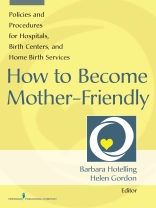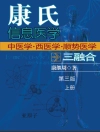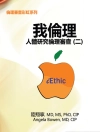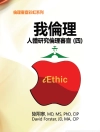This is the only book to present the evidence-based policies and procedures that medical and non-medical staff can use to develop Mother-Friendly Care in their facilities. The Mother-Friendly Childbirth Initiative (MFCI), developed by the Coalition for Improving Maternity Services (CIMS), is a wellness model designed to improve birth outcomes and substantially reduce costs. It is an evidence-based mother-, baby-, and family-friendly model that focuses on prevention and wellness as alternatives to high-cost screening, diagnosis, and treatment programs. The MFCI is the first and only consensus document on U.S. maternity care and is recognized as an important instrument for change in the U.S. and abroad.
The book is based on research and evidence developed by CIMS and includes 10 protocols, each with detailed policies and procedures and supporting information and resources that help implement the change to Mother-Friendly Care. Each protocol is authored and reviewed by recognized leaders in a variety of childbirth and maternity care arenas. The book traces the development of Mother-Friendly Care and describes its core tenets along with supporting statistical information. These tenets eschew practices not supported by scientific evidence. The manual includes implementation strategies for the evidence-based nursing care training programs of such organizations as Lamaze, ICEA, and AWHONN, and supports the WHO-Unicef ‘Ten Steps of the Baby-Friendly Hospital Initiative’ to promote successful breastfeeding.
Key Features:
- Provides evidence-based policies and procedures for developing Mother-Friendly Care in maternity care facilities
- Presents specific guidelines that can be used as a standard to measure Mother-Friendliness and subsequently used for marketing purposes
- Designed to provide childbirth educators and doulas with guidelines for promoting Mother-Friendly Care to birthing women
- Assists nurses who want to promote more rapid change on their units toward Mother-Friendly Care
- Supports the WHO-UNICEF ‘Ten Steps of the Baby-Friendly Hospital Initiative’ to promote successful breastfeeding
Inhoudsopgave
‘
Preface
Acknowledgments
PART I: FOUNDATIONS FOR STATISTICAL THINKING
1. Introduction: The Role of Statistics in Research and Clinical Practice
2. Properties of Variables: Levels of Measurement
3. Descriptive Univariate Statistics
4. Probabilities
5. Logic of Statistical Inference: The Sampling Distribution and Significance Tests
6. Standard Errors, Confidence Intervals, and the Power of Statistical Tests
7. Research Designs and Statistical Analysis
PART II: MODELS FOR CONTINUOUS/INTERVAL-LEVEL OUTCOME MEASURES
8. t-Test
9. One-Way Analysis of Variance
10. Linear Regression and Pearsonís r Correlation
11. Factorial Analysis of Variance and Analysis of Covariance
12. Multiple Linear Regression
13. Repeated-Measures Analysis of Variance
14. Introduction to Mixed-Effects Regression Models
PART III: MODELS FOR CATEGORICAL OUTCOME MEASURES
15. Nonparametric/Ordinal Statistics
16. Frequency Cross-Tabulations: 2 ? 2 Tables
17. Logistic Regression With One Independent Variable
18. Logistic Regression Models With Multiple Predictors
PART IV: MODELS FOR TIME-TO-EVENT DATA/SURVIVAL ANALYSIS
19. Incidence Rates, Life Tables, and Survival Function
20. Comparing Survival Functions in Different Groups and Hazard Regression
PART V: MEASUREMENT MODELS
21. Reliability Coefficients and Medical Test Evaluation
22. Factor Analysis
PART VI: ISSUES IN DATA MANAGEMENT
23. Data Management and Privacy Concerns
APPENDICES
A. Estimating Population Variance From Sample Variance
B. One-Sided Probabilities for z-Scores of the Standard Normal Distribution
C. Table of Critical t-Values for Several Significance Levels of t-Distributions With Different Degrees of Freedom (df)
D. Normalizing a Nonnormal Distribution
E. Table of Critical f-Values at the Significance Level of a = 0.05 of f-Distributions With Different Degrees of Freedom (df)
F. Proof That Phi = Pearsonís r
G. Table of Critical Chi-Square Values for Several Significance Levels of Chi-Square Distributions With Different Degrees of Freedom (df)
H. Refresher on Exponential and Logarithmic Transformations
I. Standardization of Interval-Level Variables
J. Answers to Selected Exercises
Index
‘Over de auteur
Barbara Hotelling, MSN, WHNP-BC, LCCE, CD(DONA), IBCLC, is an internationally renowned Women’s Health Nurse Practitioner and Consultant and on the staff of the University of North Carolina, Chapel Hill, Department of Family Medicine.












